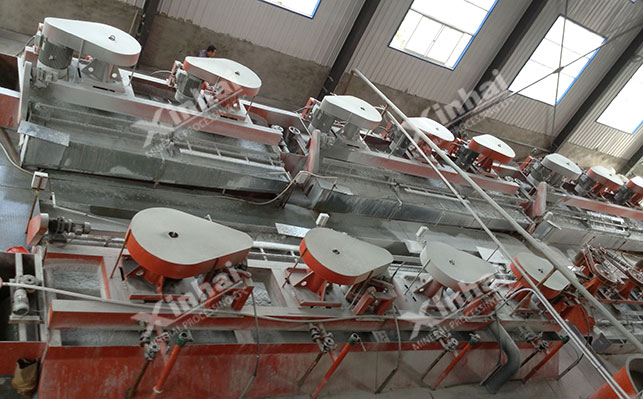High talc molybdenum ore has a complex mineral composition and is difficult to beneficiation. The beneficiation process of high talc molybdenum ore is a complex process. After rigorous beneficiation experiments, the beneficiation of this type of mineral can adopt the process of desliming molybdenum pre selection regrinding molybdenum and talc separation. It mainly includes the following key steps.

The raw ore is crushed to a certain particle size, usually less than 3 millimeters, for subsequent grinding and flotation operations.
Further grind the crushed ore, usually to a particle size of -0.074 millimeters with a content of over 85%, to ensure sufficient mineral dissociation and create conditions for subsequent flotation.
Desliming is one of the key steps in the beneficiation of high talc molybdenum ore. Due to the presence of talc and other gangue minerals, desliming can reduce the interference of sliming gangue on the flotation environment. Adding inhibitors (such as ZN-J1) during the desliming process can reduce the loss of molybdenum.
After desliming, perform pre selection flotation of molybdenum. The purpose of this step is to preliminarily enrich molybdenum minerals and improve the efficiency of subsequent flotation operations.

The pre selected molybdenum minerals need to be further ground to improve the monomer dissociation degree of molybdenum minerals. This step helps to improve the recovery rate of molybdenum and concentrate grade.
After further grinding, separate molybdenum from talc. This step is the most critical part of the entire process, usually carried out using flotation method. By adding collectors (such as diesel) and inhibitors (such as water glass+ZN-P1), effective separation of molybdenum minerals from talc can be achieved.
The entire process requires closed-loop testing to verify the effectiveness of each step and make optimization adjustments. The purpose of closed-loop testing is to ensure the stability and reliability of the entire process flow.
Ultimately, through the above process flow, high-grade molybdenum concentrate and low-grade tailings can be obtained. Molybdenum concentrate needs further drying and processing to meet the requirements of industrial applications.

The key to this process lies in maximizing the recovery rate and concentrate grade of molybdenum while reducing molybdenum loss through reasonable grinding, desliming, pre selection, regrinding, and separation steps. By optimizing the reagent system and process parameters, the beneficiation efficiency can be further improved.